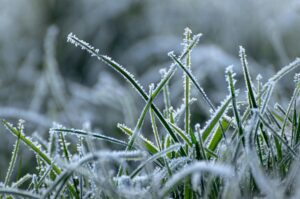
Colorado’s winters can be tough, but that doesn’t mean you have to wait until spring to install sod. In fact, with the right approach, winter sod installation can be successful and even beneficial. Whether you’re a homeowner looking to refresh your yard, a landscaper tackling a winter project, or a business needing a green space year-round, this guide will walk you through everything you need to know about laying and maintaining sod during Colorado’s cold months.
Can You Lay Sod in Winter? Absolutely!
While it may seem counterintuitive, installing sod in winter is not only possible—it can actually be a smart move. Unlike seeding, which requires warm soil and consistent watering, sod comes with an established root system, allowing it to survive and take root even in cold temperatures. Plus, winter sod installation can mean better sod availability, fewer weeds, and less watering than in the hot summer months.
Benefits of Installing Sod in Winter
- Less Watering: Colder temperatures mean less evaporation, so your sod requires less frequent watering.
- Less Competition from Weeds: Weeds are dormant in winter, reducing the risk of them competing with your sod for nutrients.
- Year-Round Curb Appeal: No need to stare at bare dirt all winter—your lawn can stay green even in the colder months.
- Better Sod Availability: Demand is lower in winter, meaning you might get fresher, high-quality sod with shorter wait times.
How to Install Sod in Winter: Step-by-Step
- Prepare the Soil: Just like in warmer months, good soil preparation is key. Clear debris, level the ground, and loosen the soil so roots can establish easily.
- Choose Cold-Tolerant Sod: Some sod varieties perform better in colder temperatures. For Colorado, consider Kentucky Bluegrass or Fine Fescue, both known for their hardiness.
- Lay Sod Quickly: Cold weather can cause sod to dry out or freeze, so work efficiently. Lay pieces tightly together to avoid gaps where cold air can penetrate.
- Water Immediately: Even though it’s cold, new sod still needs moisture. Water thoroughly after installation and continue to water sparingly when temperatures allow.
- Avoid Heavy Foot Traffic: Give your sod time to establish by keeping off of it as much as possible, especially when the ground is frozen.
- Monitor Weather Conditions: If an extreme cold snap is expected, consider covering newly installed sod with burlap or straw to provide insulation.
Caring for Sod in Winter
- Watering in the Winter: Only water when temperatures are above freezing to prevent ice buildup. A deep watering once every few weeks should suffice if there’s no snow cover.
- Snow and Frost: Snow acts as a natural insulator, protecting the sod from harsh winds and freezing temperatures. Don’t remove snow unless absolutely necessary.
- Minimal Mowing: Your sod won’t need mowing in winter, but once temperatures rise in early spring, be ready to trim it down to encourage new growth.
- Spring Boost: Once warmer weather arrives, apply a slow-release fertilizer to jumpstart root growth and ensure a lush, green lawn.
Is Winter Sod Installation Right for You?
Winter sod installation isn’t for everyone, but it’s a viable option for those who want to establish a lawn without waiting until spring. If you need sod installed but aren’t sure whether winter is the right time, working with a professional sod installer can help ensure success.
Get Expert Sod Installation in Colorado
At Emerald Sod Farms, we specialize in year-round sod solutions, including winter sod installations. Our team understands Colorado’s climate and provides high-quality sod that thrives in every season. Contact us today to discuss your sod needs and get expert advice on keeping your lawn healthy, no matter the temperature.
Winter doesn’t have to mean a brown, lifeless yard. With proper installation and care, your new sod can take root and be ready to flourish when spring arrives. Need help getting started? Reach out to Emerald Sod Farms for fresh, high-quality sod delivered right to your door.
